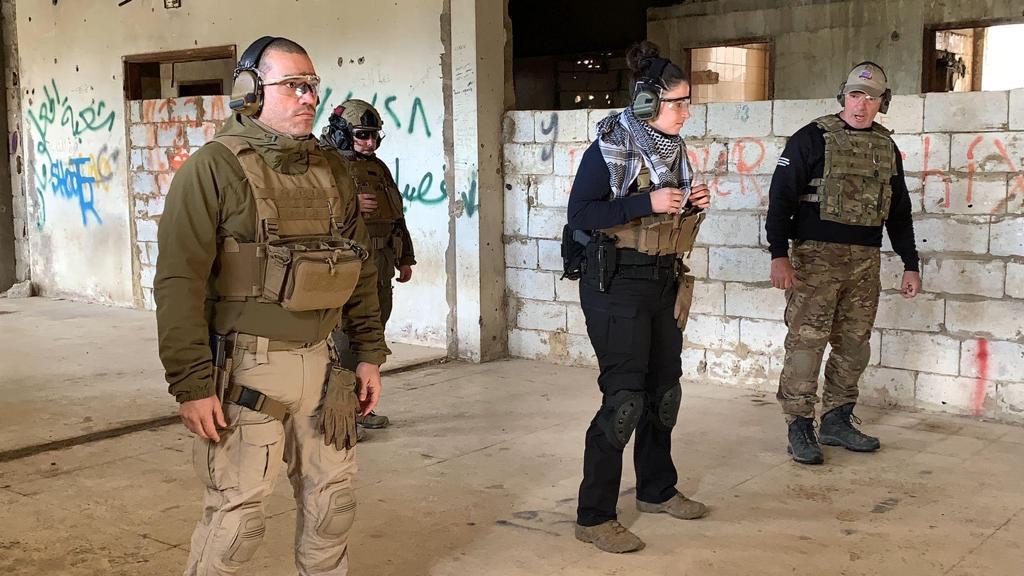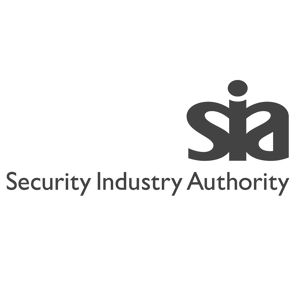Online/ Hostile
Online HEAT Training

Course code: L3/E-HEAT/201/210
Course Overview
The Hostile Environment Awareness Training (HEAT) is a comprehensive program designed to equip individuals with the skills and knowledge necessary to operate safely and effectively in high-risk and hostile environments. This training is essential for professionals who are deployed in conflict zones, regions with high crime rates, or areas prone to natural disasters. The course combines theoretical knowledge with practical exercises to ensure participants are well-prepared to face a variety of threats and challenges.
Course Content
- Introduction to Hostile Environments
- Understanding different types of hostile environments
- Risk assessment and management
- Overview of recent incidents and case studies
- Situational Awareness
Identifying and assessing threats - Defensive driving and convoy procedures
- Security protocols for accommodation and workplaces
- Personal Security Techniques
- Avoidance and de-escalation strategies
- Self-defense tactics
Handling checkpoints and hostile encounters - Emergency Medical Training
Basic first aid and CPR - Trauma care and bleeding control
Managing medical emergencies under pressure - Survival Skills
- Navigation and map reading
- Building shelters and sourcing water
- Signal for help and sustainment strategies
- Stress Management and Mental Resilience
- Coping mechanisms for high-stress situations
- Techniques for maintaining psychological health
- Support systems and resources
- Cultural Awareness and Effective Communication
- Importance of cultural sensitivity
- Effective communication in diverse environments
- Building rapport with local communities
- Reasons and Purposes for HEAT
Safety and Security: Ensuring the personal safety and security of individuals working in or traveling to high-risk areas.
Operational Effectiveness: Enhancing the ability of professionals to perform their duties effectively in challenging conditions
Course Objectives
- Enhance Situational Awareness: Develop the ability to recognize, assess, and respond to potential threats in hostile environments.
- Personal Safety and Security: Learn techniques to maintain personal security and manage risks.
- Emergency Medical Response: Acquire basic first aid and trauma care skills to handle medical emergencies.
- Survival Skills: Gain practical skills for survival in adverse conditions, including navigation, shelter building, and resource management.
- Stress Management: Learn strategies to manage stress and maintain mental resilience under pressure.
- Cultural Sensitivity and Communication: Understand the importance of cultural awareness and effective communication in diverse environments.
Award
UCP Level 3 Certificate in Hostile Environment Awareness Training
Pre-Requisites
- Evidence Of Managerial, Aid-Worker Level Or Work Reason For Participating In This Course.
- UCP Level 2 Basic Award in First Aid at Work Awareness
Curriculum
Definition and Types of Hostile Environments
- Working in a hostile environment entails operating in areas where there are significant risks to personal safety, security, and well-being. These environments can vary widely and include conflict zones, regions with high crime rates, politically unstable areas, locations with severe natural disasters, and areas affected by health crises.
Characteristics of Hostile Environments
- Conflict Zones: Areas experiencing armed conflicts, war, or civil unrest. These regions often have active combat, high levels of violence, and instability.
High-Crime Areas: Regions where crime rates are significantly higher than average, including risks of theft, kidnapping, assault, and other criminal activities.
Political Instability: Countries or regions undergoing political turmoil, which can lead to sudden changes in government, policies, and law enforcement practices, often resulting in unpredictable and dangerous situation.
Violence and Armed Conflict: In conflict zones or areas with civil unrest, there is a high risk of encountering violence, including gunfire, bombings, and armed assaults.
Kidnapping and Abduction: Hostile environments often have elevated risks of kidnapping for ransom or political leverage, particularly for foreign workers.
Crime: High-crime areas pose risks of theft, mugging, assault, and other criminal activities. This can include street crime as well as more organized forms of criminal behavior.
Injury from Hazardous Conditions: Natural disasters, poor infrastructure, and hazardous working conditions can lead to physical injuries. This includes risks from unstable buildings, unsafe roads, and lack of proper safety measures.
Health Risks
Disease and Infection: Working in regions with health crises or poor sanitary conditions increases the risk of contracting diseases such as malaria, dengue fever, cholera, and other infectious diseases.
Lack of Medical Facilities: In many hostile environments, access to quality healthcare may be limited or nonexistent, complicating the management of injuries and illnesses.
Psychological Stress: The constant threat of danger and adverse conditions can lead to significant psychological stress, anxiety, and mental health issues, including PTSD.
Environmental Risks
Natural Disasters: Earthquakes, hurricanes, floods, and other natural disasters can occur suddenly and with devastating effects, often exacerbated by poor infrastructure and emergency response systems.
Extreme Weather Conditions: Working in areas with extreme weather, such as deserts, high altitudes, or polar regions, poses risks related to heatstroke, hypothermia, dehydration, and other weather-related health issues.
Exposure to Hazardous Materials: Industrial areas or regions with environmental degradation might expose workers to hazardous chemicals, polluted air, or contaminated water.
Security Risks
Political and Social Instability: Sudden changes in political regimes, social unrest, and civil disobedience can lead to volatile and unpredictable situations, posing risks to personal safety and operational continuity.
Terrorism: In some regions, the threat of terrorism is significant, with risks of bombings, shootings, and other terrorist activities aimed at causing mass casualties and disruption.
Cybersecurity Threats: In hostile environments, the risk of cyber-attacks on communication systems, data breaches, and other cybersecurity threats can be elevated, particularly in regions with weak cyber defenses.
Operational Risks
Logistical Challenges: Poor infrastructure, limited transportation options, and supply chain disruptions can impede operations and pose risks to personnel.
Communication Failures: In remote or unstable regions, maintaining reliable communication can be difficult, leading to isolation and increased vulnerability in emergencies.
Regulatory and Legal Issues: Navigating the local legal and regulatory environment can be challenging, with risks of legal complications, bureaucratic hurdles, and potential conflicts with local authorities.
Cultural and Social Risks
Cultural Misunderstandings: Misunderstandings or offenses due to cultural differences can escalate tensions and create hostile situations.
Language Barriers: Difficulty in communicating effectively can lead to misunderstandings, miscoordination, and increased risk in critical situations.
Community Relations: Poor relations with local communities can lead to hostility, lack of cooperation, and even direct threats to personal safety.
Mitigation Strategies
Comprehensive Training: Undergoing thorough pre-deployment training, such as Hostile Environment Awareness Training (HEAT), to understand and prepare for potential risks.
Risk Assessment and Management: Conducting detailed risk assessments and developing risk management plans tailored to the specific environment.
Personal Security Measures: Implementing robust personal security measures, including secure accommodations, travel protocols, and maintaining a low profile.
Health Precautions: Taking necessary health precautions, including vaccinations, prophylactic medications, and maintaining good hygiene practices.
Emergency Preparedness: Developing and practicing emergency plans, including evacuation procedures and crisis communication strategies.
Cultural Sensitivity Training: Learning about the local culture, customs, and social norms to navigate the environment respectfully and effectively.
Building Local Networks: Establishing a network of local contacts and allies who can provide support, information, and assistance in navigating the environment safely.
By understanding the potential risks and implementing appropriate mitigation strategies, individuals can significantly enhance their safety and effectiveness while working in hostile environments.
Working in a hostile environment inherently involves numerous security risks that can threaten personal safety, disrupt operations, and compromise mission success. These risks arise from various factors, including political instability, criminal activities, armed conflict, and terrorism. Understanding these security risks is crucial for developing effective mitigation strategies and ensuring the safety of personnel and assets.
Types of Security Risks
Political and Social Instability
Coup d'état and Regime Change: Sudden changes in government can lead to a power vacuum, lawlessness, and increased violence.
Civil Unrest: Protests, strikes, and demonstrations can escalate into violent clashes, posing risks to individuals caught in the vicinity.
Martial Law and Curfews: Imposition of martial law or curfews can restrict movement and increase the likelihood of confrontations with security forces.
Terrorism
Bombings and Explosions: Terrorist groups may target public places, government buildings, or foreign nationals with bombings or other explosive devices.
Armed Attacks: Armed assaults on facilities, convoys, or individuals by terrorist organizations aiming to cause mass casualties and disruption.
Kidnappings: Abductions for ransom, political leverage, or ideological reasons, often targeting foreigners or high-profile individuals.
Criminal Activities
Organized Crime: Organized crime syndicates may engage in extortion, smuggling, human trafficking, and other illicit activities that can pose direct or indirect threats.
Street Crime: High rates of muggings, robberies, carjackings, and petty thefts, particularly in urban areas with inadequate law enforcement.
Cybercrime: Increased risk of cyber-attacks, data breaches, and other forms of cybercrime targeting sensitive information and communication systems.
Armed Conflict
Combat Operations: Active combat zones where ongoing military operations pose risks of crossfire, shelling, and aerial bombardments.
Militia and Rebel Groups: Non-state actors such as militias and rebel groups who may engage in violent activities against the state or other groups.
Landmines and Unexploded Ordnance: Presence of landmines and unexploded ordnance (UXO) from previous conflicts, posing long-term dangers.
Local Law Enforcement and Corruption
Bribery and Extortion: Corruption within local law enforcement can lead to demands for bribes or protection money, increasing financial and operational risks.
Abuse of Power: Instances of law enforcement abuse, including arbitrary arrests, detention, and harassment, particularly targeting foreigners.
Inconsistent Law Enforcement: Lack of consistent and reliable law enforcement, leading to increased vulnerability to crime and violence.
Environmental and Infrastructure Risks
Poor Infrastructure: Inadequate infrastructure, including roads, bridges, and communication networks, can exacerbate security risks by impeding movement and emergency response.
Natural Disasters: Areas prone to natural disasters can experience secondary security risks, such as looting, increased violence, and breakdown of law and order during crises.
Mitigation Strategies
Risk Assessment and Planning
Pre-Deployment Risk Assessment: Conduct thorough risk assessments prior to deployment to understand the specific security threats in the area.
Contingency Planning: Develop detailed contingency plans for various scenarios, including evacuation routes, safe havens, and emergency communication protocols.
Personal Security Measures
Travel Protocols: Implement secure travel protocols, including the use of armored vehicles, secure transportation routes, and avoidance of high-risk areas.
Accommodation Security: Ensure accommodations have robust security measures, such as guards, secure perimeters, and emergency alarms.
Low Profile: Maintain a low profile to avoid attracting attention, including dressing conservatively and avoiding displays of wealth.
Situational Awareness and Training
Situational Awareness: Continuously monitor the local environment for changes in security conditions, including news updates, local reports, and intelligence briefings.
Security Training: Undergo regular security training, including Hostile Environment Awareness Training (HEAT), self-defense, and emergency response drills.
Building Local Networks
Local Liaison: Establish relationships with local authorities, community leaders, and security professionals who can provide valuable information and assistance.
Cultural Sensitivity: Develop an understanding of local customs, traditions, and social norms to build rapport and reduce the risk of misunderstandings and conflicts.
Technological and Cybersecurity Measures
Secure Communications: Use encrypted communication channels and devices to protect sensitive information from interception and cyber-attacks.
Cybersecurity Protocols: Implement robust cybersecurity protocols, including regular updates, secure passwords, and employee training to mitigate cyber threats.
By comprehensively understanding and addressing the security risks associated with working in hostile environments, individuals and organizations can enhance their safety, operational effectiveness, and overall resilience in the face of adversity
Key Principles for Crisis Response
Reacting and responding effectively in a crisis situation within a hostile environment involves a combination of preparation, swift decision-making, and adherence to well-practiced protocols. The following principles are essential:
Preparedness: Thorough preparation is the foundation for effective crisis response. This includes training, contingency planning, and understanding the specific risks associated with the environment.
Situational Awareness: Maintaining a high level of awareness about your surroundings and potential threats allows for early detection and swift action.
Calm and Composure: Keeping calm under pressure is crucial for making rational decisions and executing plans effectively.
Communication: Clear and reliable communication is essential for coordinating responses, seeking assistance, and providing updates.
Steps to React and Respond in a Crisis
Immediate Threat Assessment
Identify the Nature of the Crisis: Determine whether the crisis is due to violence, natural disaster, health emergency, or another cause.
Evaluate Immediate Dangers: Assess immediate threats to life and safety, such as ongoing violence, structural collapse, or hazardous conditions.
Personal Safety Actions
Seek Shelter: Move to a safe location, such as a secure room or designated safe area, away from immediate danger.
Implement Security Protocols: Lock doors, secure entry points, and use any available security measures to protect yourself and others.
First Aid: Administer basic first aid if there are injuries, focusing on life-saving measures such as stopping bleeding and performing CPR if necessary.
Communication and Coordination
Alert Authorities: Contact local authorities, security forces, or emergency services to report the crisis and request assistance.
Inform Team Members: Communicate with colleagues and team members to inform them of the situation and coordinate responses.
Use Reliable Communication Channels: Utilize secure and reliable communication methods, such as encrypted radios or satellite phones, to maintain contact.
Activate Emergency Plans
Follow Contingency Plans: Implement pre-established emergency plans and protocols tailored to the specific type of crisis.
Evacuation: If the situation requires, execute evacuation procedures to move to a pre-determined safe location or evacuation point.
Shelter-in-Place: In some situations, it may be safer to stay in place rather than evacuate. Follow shelter-in-place procedures if this is the case.
Situational Control
Take Charge: If you are in a leadership role, take command of the situation, assign tasks, and provide clear instructions to team members.
Delegate Responsibilities: Assign specific roles and responsibilities to team members based on their skills and training.
Manage Resources: Ensure that critical resources, such as medical supplies, food, water, and communication devices, are available and accessible.
Post-Crisis Actions
Assess and Report: Once immediate threats are mitigated, assess the situation, gather information, and report to higher authorities or organizational leaders.
Debrief and Review: Conduct a debriefing session to review the crisis response, identify successes and areas for improvement, and update plans and training accordingly.
Support and Recovery: Provide support to affected individuals, including medical care, psychological support, and logistical assistance for recovery.
Crisis Scenarios and Specific Responses
Violent Incidents
Active Shooter: Follow the "Run, Hide, Fight" protocol: escape if possible, hide if escape is not feasible, and fight as a last resort.
Kidnapping Attempt: Try to avoid confrontation, comply with demands if caught, and look for opportunities to escape or signal for help.
Natural Disasters
Earthquake: Drop, cover, and hold on during shaking; evacuate to open space once shaking stops; avoid damaged buildings and infrastructure.
Flooding: Move to higher ground immediately; avoid walking or driving through floodwaters; follow evacuation orders from authorities.
Health Emergencies
Disease Outbreak: Follow infection control protocols, such as wearing protective equipment, practicing good hygiene, and isolating affected individuals.
Injury and Trauma: Provide immediate first aid, prioritize treatment based on the severity of injuries, and seek professional medical help as soon as possible.
Cybersecurity Breaches
Data Breach: Isolate affected systems, change passwords, and follow incident response plans to secure data and notify stakeholders.
Cyber Attack: Disconnect compromised systems from the network, assess the extent of the attack, and implement recovery procedures.
Training and Drills
Regular Drills: Conduct regular crisis response drills to practice and reinforce procedures for different types of crises.
Scenario-Based Training: Engage in scenario-based training to simulate real-life crisis situations and test response plans.
Continuous Learning: Stay updated with the latest best practices and technologies in crisis management and integrate them into training programs.
By understanding how to react and respond in a crisis situation, individuals and teams can enhance their ability to manage emergencies effectively, reduce risks, and ensure safety in hostile environments.
FAQ (Frequently Asked Questions)
UCP Group Awards are the most globally recognized awarding system in the industry. Earning a UCP Group award demonstrates to your employer that you have undergone rigorous training and learning without the restrictions imposed by other awarding bodies. This is not only because we can instruct in any language (Spanish, French, Italain but also because UCP Group not only meticulously compiles portfolios of evidence on every aspect of the criteria but also incorporates an added level of training not permitted in most other awarding bodies' curricula.
A UCP Award is the definitive mark of quality, featuring a QR-coded system for verification and authenticity. All tutors within the UCP Group are highly qualified and competent in their respective fields, possessing backgrounds that are unparalleled globally. UCP instructors are not only educators but also experienced commanders, ensuring that you retain the knowledge both in the classroom and in the field. They are all English-speaking and UK-qualified, with most having a British military background, bringing a wealth of practical experience and expertise to the training
Yes, upon successful completion of the course, you will receive a certificate, which can be downloaded or mailed to you.
UCP Group online or eLearning Awards are the most globally recognized awarding system in the industry. Earning a UCP Group online award demonstrates to your employer that you have undergone CPD training and learning to enhance your knowledge of the particular remit.
This is because you can learn in any language (Spanish, French, Italain and Arabic.
A UCP Award is the definitive mark of quality, featuring a QR-coded system for verification and authenticity. All program writers within the UCP Group are highly qualified and competent in their respective fields, possessing backgrounds that are unparalleled globally. UCP programming authors are not only educators but also experienced commanders, ensuring that you retain the knowledge.
1. Non-Refundable Deposits
All deposits or full course fees paid for online training courses are strictly non-refundable. This policy ensures that UCP Group can secure your place and make the necessary arrangements for your training.
2. Payment of Course Fees
Payment Deadline: All course fees must be received within before the online links are provided.
If you do not adhere to the pre-requisite of the courses then you will have to show your knowledge and proof or purchase the courses.
If you book without the knowledge of the prerequisite courses then your fees will go towards the prerequisite courses first then any balance due will be used against your actual course with any extra fees or balances due before the link is provided as per the terms and conditions agreed upon at the time of registration.
3. Refund Policy for Cancellations
Cancellations Within 30 Days of Course Start: Any cancellations made within 30 days of the course start date are not eligible for a refund. This policy applies to the full amount of the course fees paid.
No Refunds for Non-Attendance: If a learner is unable to attend the course online after full payment has been made, no refunds will be issued.
4. Exceptional Circumstances
Consideration of Extreme Proven Circumstances: In cases of extreme, proven circumstances, UCP Group will work with the learner to minimize the impact on both the organization and the learner. This may involve rescheduling the course or exploring alternative solutions, but it does not guarantee a refund.
5. Agreement to Terms
By enrolling in a UCP Group online training course, learners acknowledge and agree to this refund policy. It is the responsibility of the learner to ensure the terms and prerequisite courses with timely payment of all fees and to communicate promptly with UCP Group in the event of any issues or exceptional circumstances.
This refund policy is designed to ensure clarity and fairness for all parties involved while maintaining the integrity and financial stability of UCP Group's training programs
You can enroll through our website by selecting the course you’re interested in and following the registration process.
Yes, most courses are accessible on mobile devices through a web browser or a dedicated app, if available.
Our support team is available 24/7 to assist with any technical issues. You can contact them via email, phone, or live chat.
Courses are structured into modules or units, each containing lessons, quizzes, and assignments. You can track your progress through the learning platform.
Some courses include live sessions, webinars, or interactive discussions with instructors. Details will be provided in the course outline.
Policies on retaking courses vary. Some courses allow lifetime access to materials, while others might require re-enrollment.
We welcome your feedback! You can provide feedback through course evaluations, surveys, or by contacting our support team directly.
Yes, we offer a range of advanced courses and learning paths to help you continue your education and skill development.














